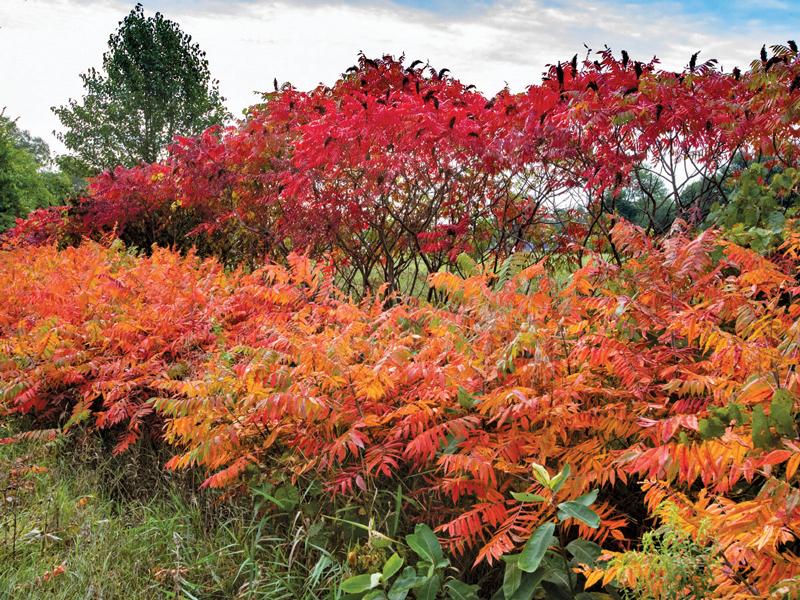When we start seeing low blazing rows of fall color along the roadside, odds are that at least some of it is sumac. Starting in late summer, this showy plant stands out in brilliant reds, oranges, and yellows.
Staghorn sumac seems to be everywhere. Less common is the closely related smooth sumac. Aside from the staghorn’s namesake velvety bark they’re very similar in appearance, and we’re lumping them together here.
Becky Gajewski, a stewardship specialist with the city’s Natural Area Preservation unit, and Garth Holman, a project manager for the U-M Herbarium, tell us that sumac does well in tough habitats: it requires little water and thrives even in nutrient-poor and dried-up soils. Burning and cutting merely rejuvenate it. For those who don’t care for sumac, this can present a challenge.
Sumac is a “clonal plant.” A single sumac plant will extend a root portion, and up from that extension will pop another sumac plant genetically identical to the first. Soon there’s an entire “clonal colony.”
Reproduction by cloning is asexual. Sumac, however, is not a sexless plant. Each colony is either male or female and can reproduce sexually aided by insect pollinators and seed dispersal by birds eating the sumac fruit. Those fruits–bright, rusty-red cones that rise above the foliage–are the easiest way to tell the girls from the boys.
According to Holman, one of the more important benefits of sumac is that it serves as a “nursery for trees.” The dense shade a clonal colony creates inhibits perennial growth beneath it that might compete with young trees. The trees thrive, and so does the sumac, until the trees get big enough to create their own shade. Sumac tolerates a lot of different environments, but it is a very sun-loving shade-intolerant plant.
The fruit of sumac is used to make a sour, slightly lemony tea. Portions of it are also used as a spice. Cashews, pistachios, and mangoes are in the same botanical family–as are poison oak and poison ivy.
Among the sumacs, the bad actor is poison sumac. Fortunately, poison sumac is confined to permanently boggy wetlands. According to Gajewski, the Natural Area Preservation unit’s inventory lists poison sumac only at Dolph Nature Area, and even there it is described as uncommon.
Staghorn and smooth sumac range from being common to uncommon in the city’s parks and nature areas. This time of year, look for sumac color wherever wild shrubbery grows along a roadway or at the edge of fields.


